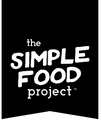What We Mean by Whole Foods
Food, as it should be.
We’re not saying you need to go full DIY raw (but good on you if you do!). We’re just saying: real food matters.
Feeding your pet shouldn’t feel overwhelming—but with so many options (and opinions), it often does. We believe real food can be simple, honest, and accessible.
At its core, real food is exactly what it sounds like: whole ingredients that nourish the body. High-quality proteins, healthy fats, and nutrient-rich produce. That’s what shapes long-term health—from shiny coats and strong immune systems to smaller poops and wag-worthy energy levels.
We choose real food because it works. And when your vitamins and minerals come from actual food—not synthetic powders—they’re easier to absorb, better balanced, and do more for your pet’s health.
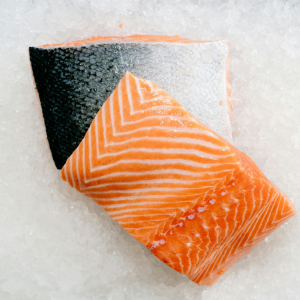
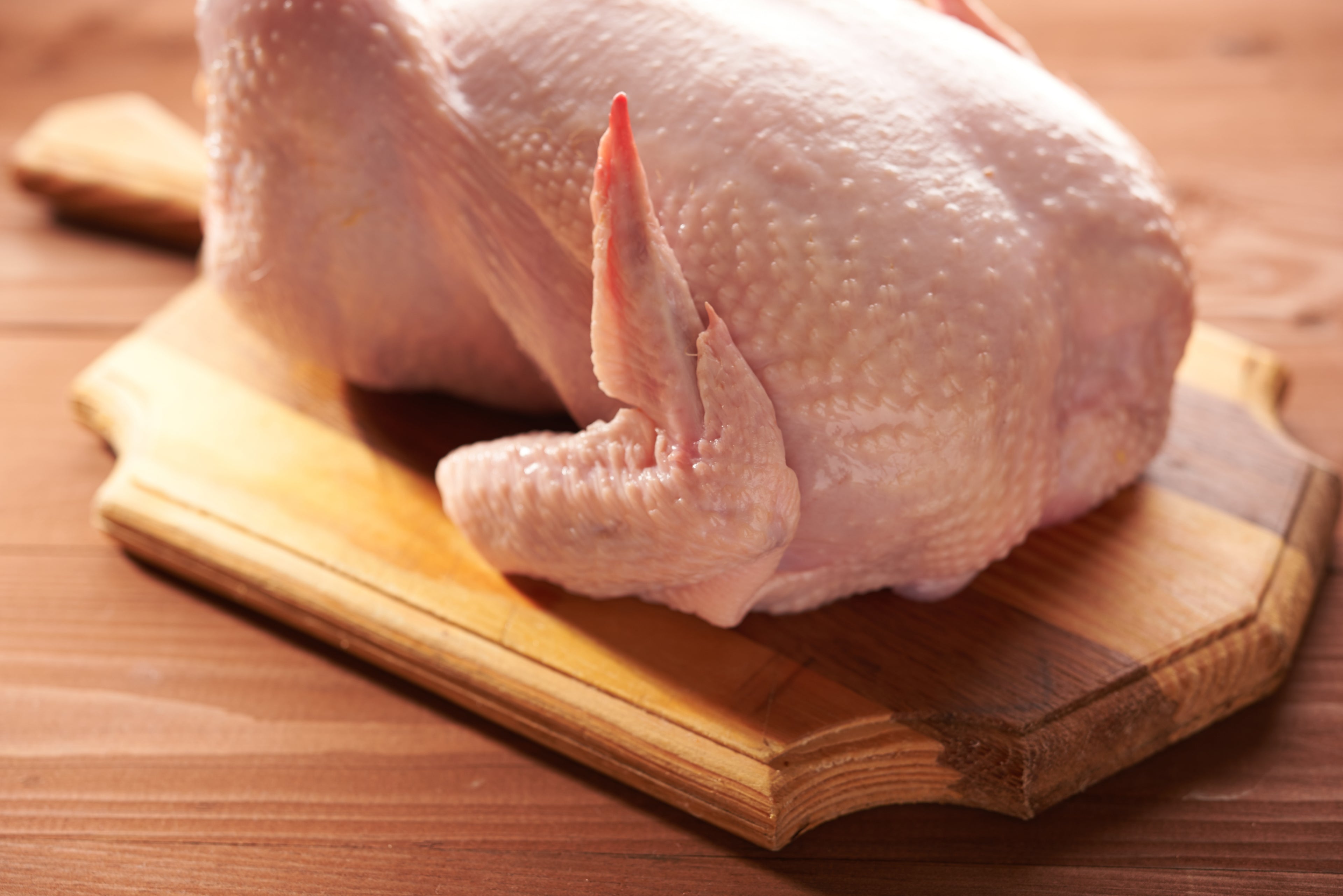
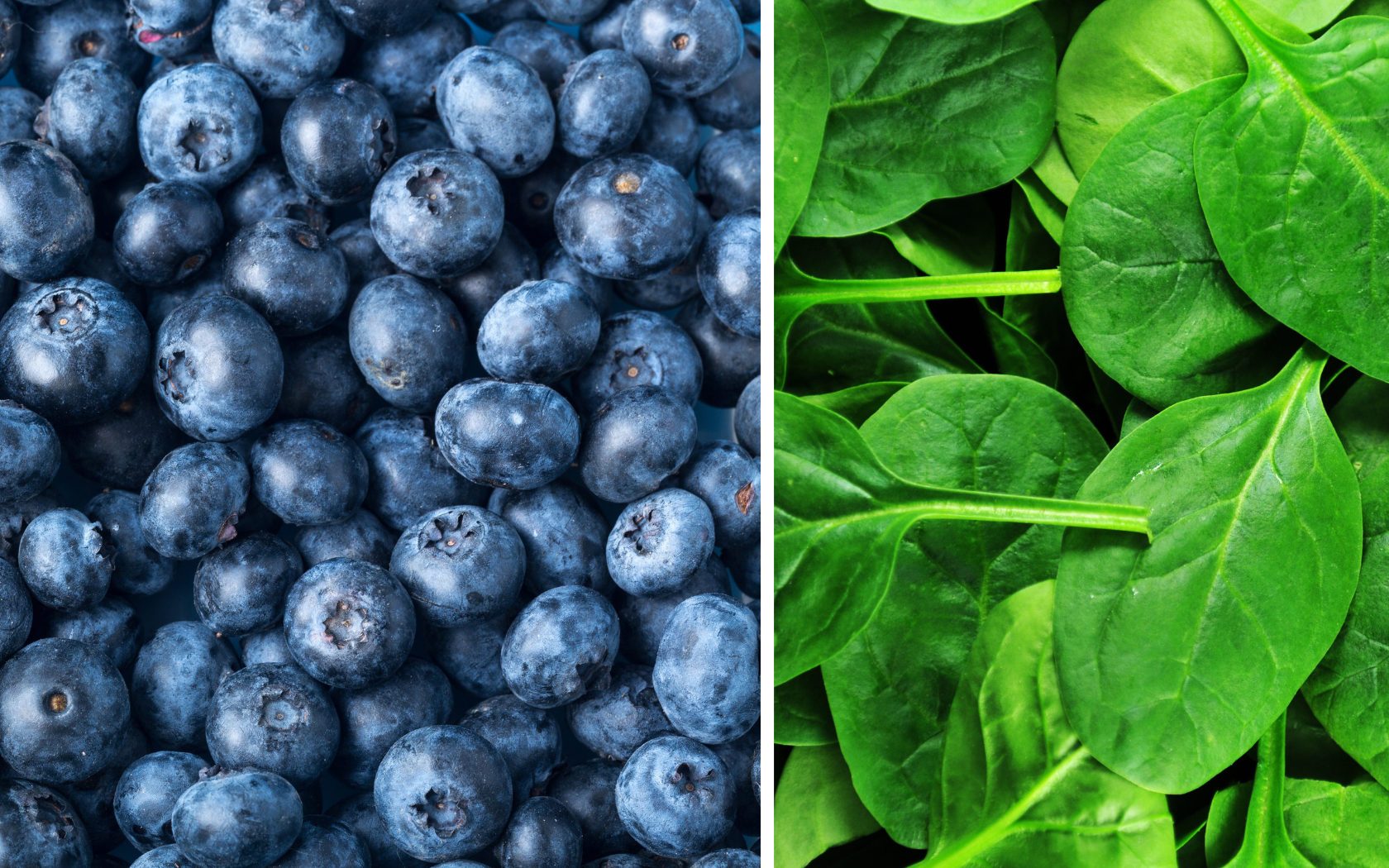

Nutrients from Food, Not the Lab.
No Synthetic Packs. No Powdered Add-Backs.
Most pet foods take a detour: overprocess the ingredients, strip out the nutrients, then add synthetic vitamins and minerals back in to “rebuild” what was lost. We skip that mess altogether.
We don’t use synthetic vitamin packs. We don’t use powdered premixes. Every bit of nutrition in our food comes directly from real meat, organs, and organic produce—because your pet’s body knows what to do with food. Not lab-made fillers.
✓ No synthetic vitamins
✓ No added mineral packs
✓ No need to “reconstruct” nutrition
This is food that feeds biology. Not just the bowl.
See for Yourself: Our Ingredients vs. Theirs
Ingredient Decks Shouldn’t Need Decoding.
We keep our ingredient lists short, clean, and readable—because what’s in the bowl matters. It’s not just about hitting nutrient targets. It’s about how you get there.
The Simple Food Project – Chicken & Turkey
- Chicken
- Turkey
- Chicken Hearts
- Flaxseed
- Sweet Potato
- Chicken Liver
- Organic Carrots
- Whole Ground Krill
- Whole Ground Pumpkin Seeds
- Organic Blueberries
- Organic Spinach
- Organic Cinnamon
- Sea Salt
- Dried Kelp
- Dried Yeast
- Mixed Tocopherols (natural preservative)
Stella & Chewy's – Chicken Dinner Patties
- Chicken with Ground Bone
- Chicken Liver
- Chicken Gizzard
- Pumpkin Seed
- Organic Cranberries
- Organic Spinach
- Organic Broccoli
- Organic Beets
- Sodium Phosphate
- Organic Carrots
- Organic Squash
- Organic Blueberries
- Fenugreek Seed
- Potassium Chloride
- Dried Kelp
- Mixed Tocopherols (preservative)
- Choline Chloride
- Probiotics (4 strains)
- Zinc Proteinate
- Iron Proteinate
- Taurine
- Calcium Carbonate
- Vitamin E Supplement
- Thiamine Mononitrate
- Copper Proteinate
- Manganese Proteinate
- Sodium Selenite
- Niacin Supplement
- D-Calcium Pantothenate
- Riboflavin Supplement
- Vitamin A Supplement
- Vitamin D3 Supplement
- Vitamin B12 Supplement
- Pyridoxine Hydrochloride
- Folic Acid
Sodium Phosphate
Used to stabilize texture and shelf life. Not a whole food—just functional filler.
Potassium Chloride
A salt-based potassium source added to balance nutrients lost in cooking. Not from food.
Choline Chloride
A synthetic compound added to support liver and nerve function—usually added post-processing.
Taurine
Synthetic taurine is added when real meat isn’t enough. Ours gets it naturally from organ meats—no need to add it back in.
Calcium Carbonate
Made from ground rock or limestone—not from animal bones or food-based sources.
One of these lets food do the work.
The other? Needs over 20 added vitamins and minerals just to meet the mark.
If you need a chemistry degree to read it, it probably isn’t food.
Feeding Real Food—How It Helps
It’s What’s Inside the Bowl (and the Ingredients).
Feeding real food helps your pet thrive—not just survive.
Every ingredient plays a role in supporting their body, inside and out:
-
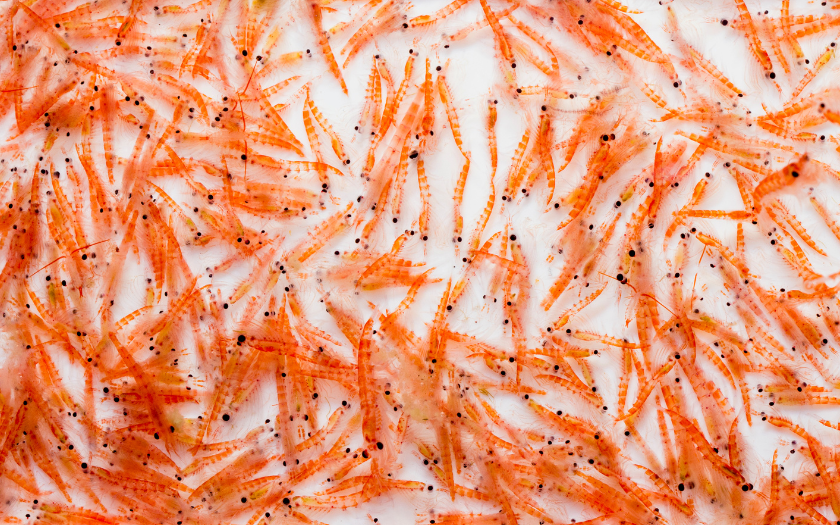
Omega-Rich Ingredients
Support skin, coat, brain health, and inflammation response.Omega-3s—specifically EPA and DHA—are critical nutrients for both dogs and cats. Found in wild-caught fish and nutrient-dense organs, these fatty acids reduce inflammation throughout the body, support brain development (especially in puppies and kittens), and contribute to a glossy, itch-free coat. And unlike plant-based sources, animal-based Omegas are already in the form pets need—so their bodies can actually use them.
In today’s pet food world, omega claims are everywhere—but the source matters. We rely on natural sources like whole fish and krill, not shelf-stable oils that oxidize before they even hit the bowl. When Omegas come from whole food, you’re not just coating kibble—you’re building a healthier pet, cell by cell.
-
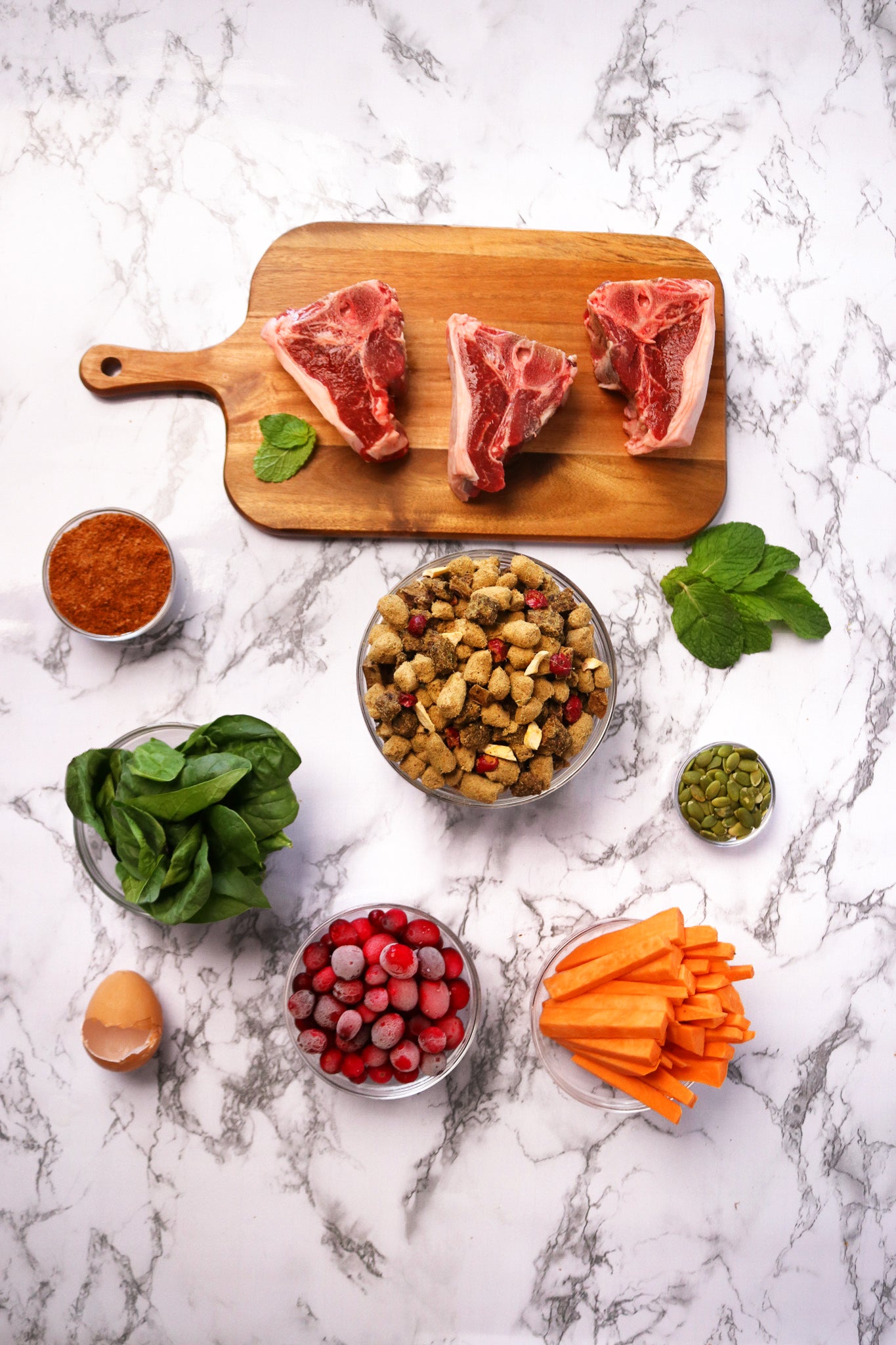
Balanced by a Holistic Vet –
No math. No synthetics. Just built-in nutrition.Most commercial foods rely on synthetic premixes to hit minimum nutrient targets—because high-heat processing destroys much of the natural nutrition. At The Simple Food Project, we build balance into the recipe itself. Each formula was developed by holistic veterinarian Dr. Chris Bessent to meet the full nutritional needs of dogs or cats using nothing but real food.
What that means for you? No need to “complete” the diet with powders. No guesswork. Just food that’s nutritionally sound from the start—designed to support energy, immunity, muscle tone, and longevity.
-

Gentle on Digestion – Free from fillers and excess carbs, with a nutrient profile that supports gut health and stool consistency.
We skip the usual suspects—no rendered meals or ultra-processed carbs—because what you don’t feed matters just as much as what you do. Our formulas are simple, intentional, and built to match your pet’s biology, so digestion happens the way it’s supposed to. That means smaller poops, better nutrient absorption, and a lot less gas (you’re welcome).
When the gut’s happy, the whole body benefits. A healthy microbiome strengthens the immune system, improves skin health, and even impacts mood and behavior. And since digestion is often the first thing to go when something’s off, it’s also the first place you’ll notice improvement with real food.
-
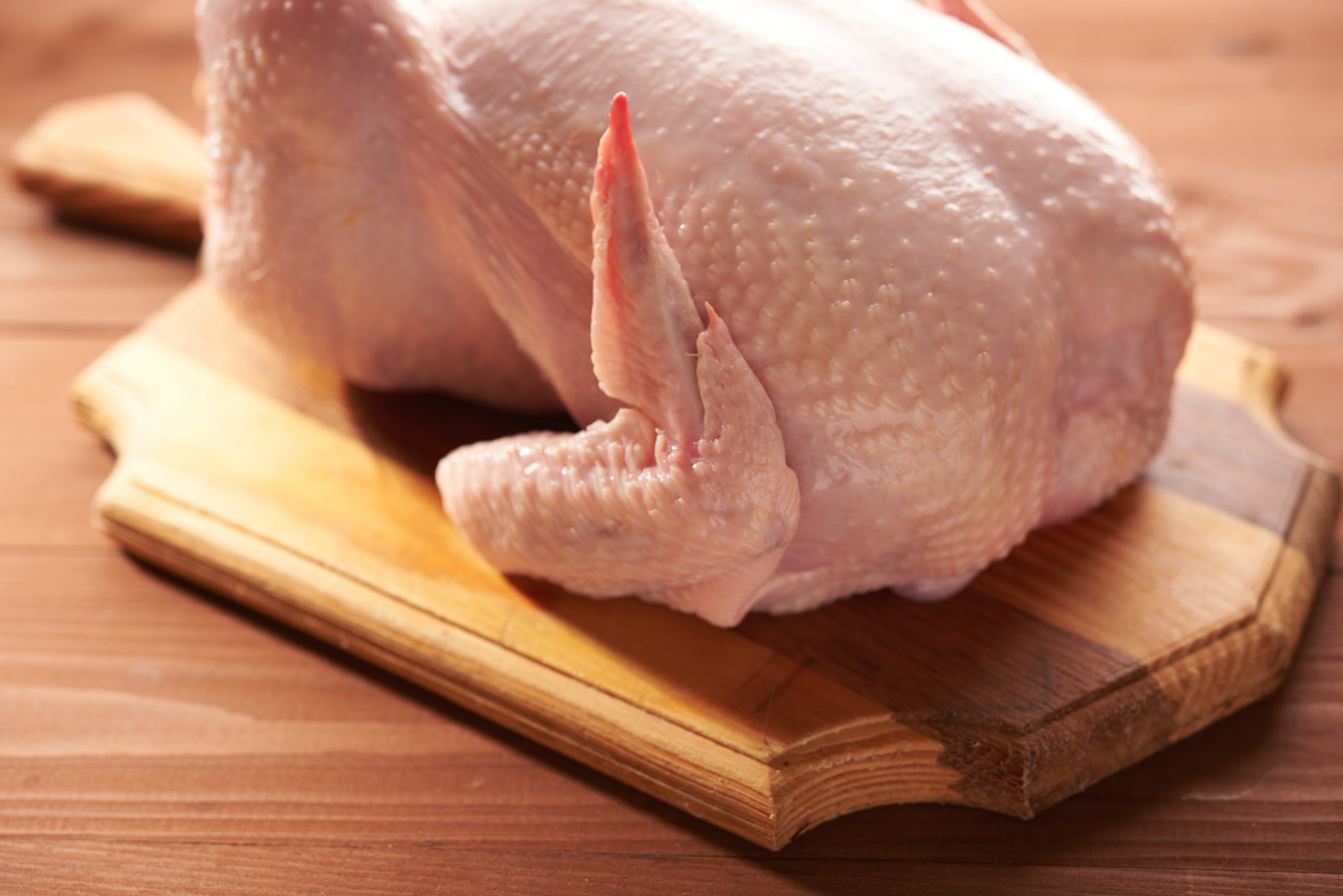
Real Skeletal & Organ Meats – The way carnivores are meant to eat.
Skeletal muscle meat is rich in amino acids that support everything from lean muscle to organ function. Organs like liver and heart are powerhouses of natural vitamins and minerals—offering bioavailable sources of B12, iron, zinc, and more. These aren’t add-ons or accessories—they’re essential parts of a carnivore’s diet.
Because we use whole cuts and real organs (not meat meals), the nutrients in our food don’t need to be “re-added” in a powdered mix. It’s a direct route from bowl to body. And because it’s what dogs and cats were built to eat, it supports everything from metabolism to coat quality to immune strength.
-
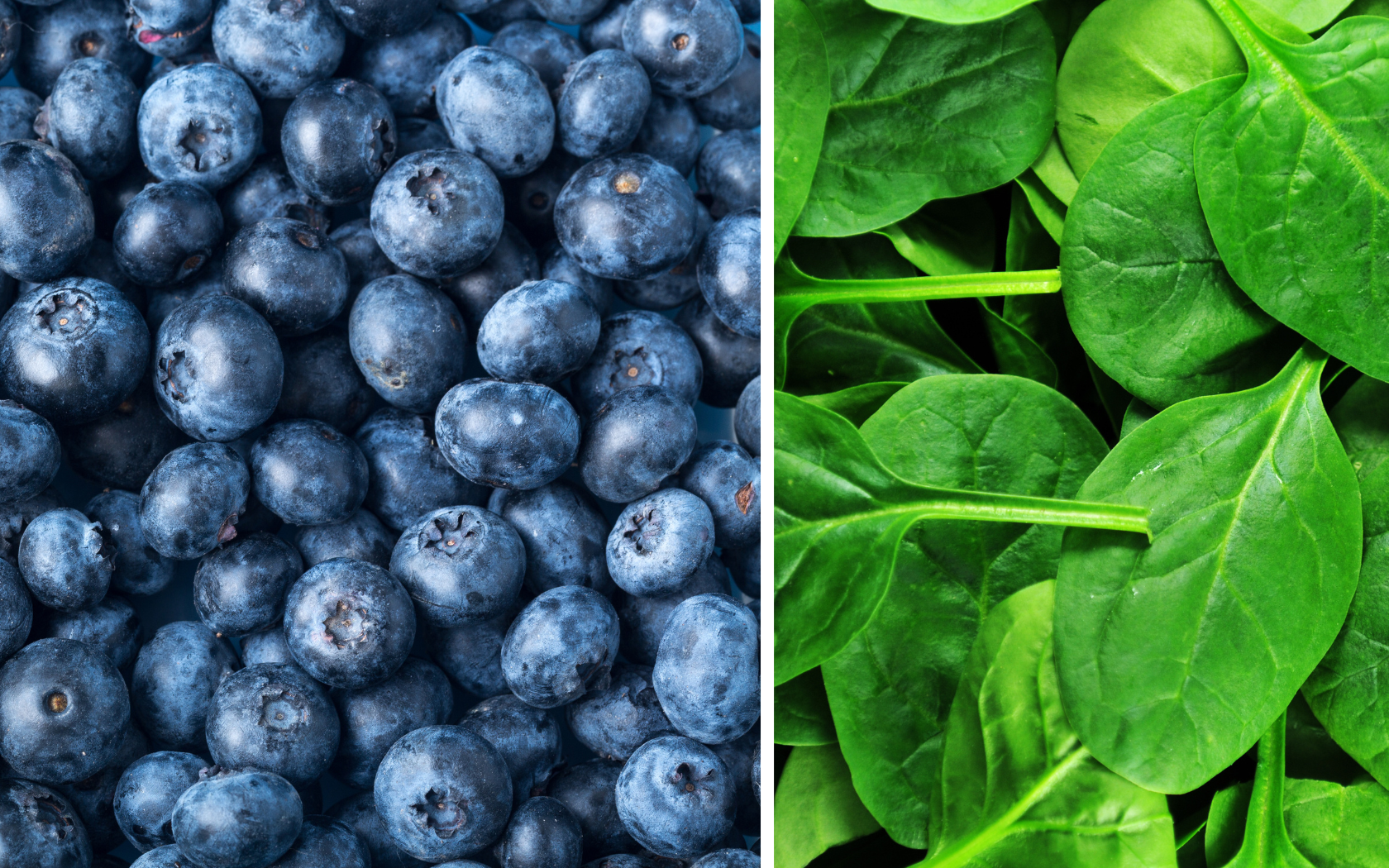
Organic Fruits & Veggies –Antioxidant-rich support for long-term health.
We’re picky about our produce. Every fruit or veggie we include serves a purpose—and that purpose is usually antioxidant power. Ingredients like organic blueberries, broccoli, and cranberries are rich in compounds like polyphenols and flavonoids, which help neutralize free radicals in the body. That means less cellular damage, better immune support, and protection against age-related disease.
Unlike synthetic antioxidants or lab-made vitamins, real-food sources are easier for the body to recognize and use. You’re not just “checking a box” with these ingredients—you’re building resilience. And over time, that adds up to healthier organs, stronger immunity, and a longer, better life.
-
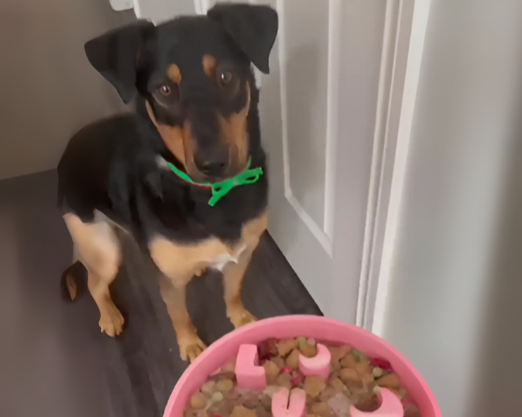
Hydration-Forward Feeding
Support kidney health, urinary function, and overall vitality.Most pets live in a state of chronic dehydration—especially those eating dry food. Cats, in particular, have a low thirst drive and are designed to get moisture from their food. When moisture’s missing, their organs work harder to compensate. That can lead to sluggish digestion, urinary issues, and strain on the kidneys over time.Freeze-dried food changes that. When rehydrated with warm water or broth, it delivers the moisture your pet’s body is naturally wired to expect. Hydrated bowls help support healthy kidney function, regular elimination, and optimal nutrient absorption—while encouraging your pet to drink more overall. It’s not just about what you feed—it’s about how you serve it.
“We don’t hide the nutrients in a powdered premix. They’re in the food.”
Not All “Real Food” Is Created Equal
Let’s Break Down the Formats
Because the words “real food” get tossed around a lot—so let’s talk about what actually ends up in the bowl.
DIY Raw
Nourishing when balanced—but takes time, tools, and sourcing savvy.
Kibble
Ultra-processed with synthetic vitamins added back in.
Most Freeze-Dried
Real meat + organs, but many still rely on synthetics and filler ingredients.
The Simple Food Project
Whole food only—no synthetics, no fillers, no powdered premixes.

The Difference Real Food Makes
Consider what you’re feeding your own dog—or cat. They may not be able to tell you how they feel, but their body will.
Start by asking:
- Do they itch, flake, or have a dull coat?
- Are their stools inconsistent—or just plain stinky?
- Is their breath sour, their weight off, their energy low?
- Are they constantly licking, tooting, scratching?
All of those are signs the food isn’t working.
Real food doesn’t mean perfection overnight. But when you feed high-quality, whole ingredients that match your pet’s biology, you start to see real, lasting change.
That can be as simple as throwing an egg in the bowl once a week or switching to a freeze-dried recipe that’s fully whole food (like ours). Any amount of real food is a win.
Because real food is functional. It nourishes the body, supports health, and builds a better baseline.
And when it’s fed in species-appropriate proportions? That’s when it becomes transformative.
Real Food. Real Nutrition.
Everything your pet needs. Nothing they don’t.
When the ingredients are simple and the nutrition comes from real food, it’s easier to understand what you’re paying for—and why it matters. And the more you understand your pet’s food, the more confident you become in what you’re putting down each day.
Feeding better doesn’t have to be complicated. It just has to be honest.

